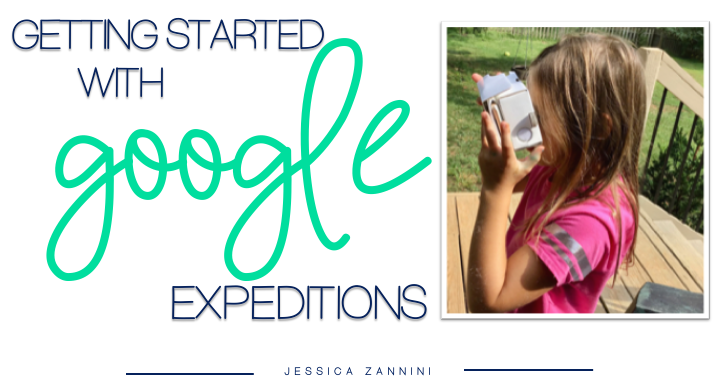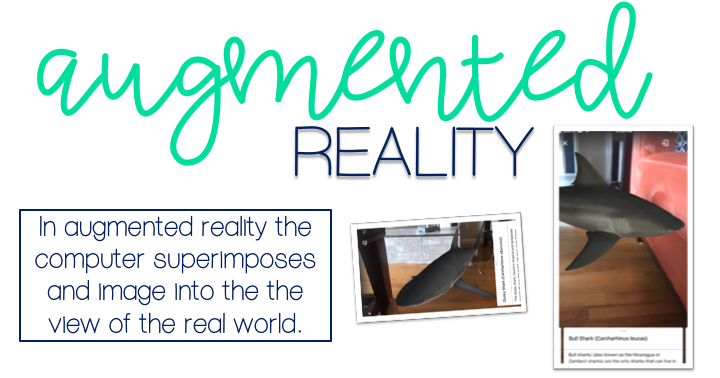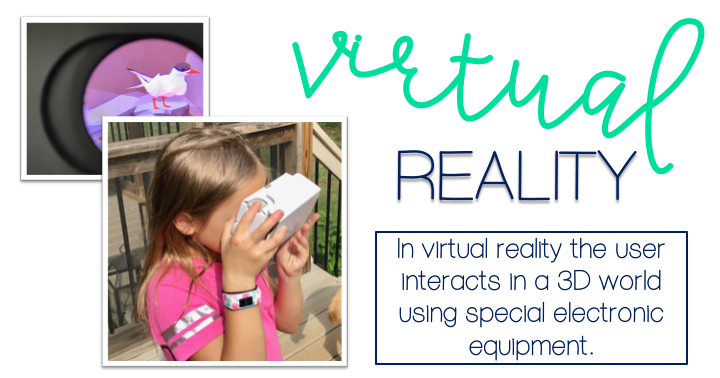
What are Google Expeditions?
Virtual and augmented reality are beginning to make a splash in education. It all sounds exciting, but if you are like me, you wrote it off as something too techy and hard to figure out.
But, guess what? It is actually super easy. And the quickest way to dip your toe in is to use Google Expeditions.
Google Expeditions offers both virtual and augmented reality. Students can explore the streets of Rome or watch sharks swim at their feet. Each tour is labeled as augmented reality (AR) or virtual reality (VR).

With augmented reality you just need a device that can download the Google Expeditions app. The app will ask you to find a flat surface and voila – you have sharks and dinosaurs in the room with you!

For the virtual reality you will need the cardboard glasses to get the full experience. There are several cheap options on the market. I used the Knoxlabs version that was $7.00. These worked for my purposes, but you may have some students who struggle with the experience. There are great virtual reality headsets you can purchase, however you may find the price will not fit in your school budget.
How to Get Started with Google Expeditions
- Download the Google Expeditions App.
- Purchase (or make) the Cardboard glasses.
- If you are using the glasses, download the Cardboard App. (Side note, this was a fun experience to set up the glasses)
- Determine your lesson topic.
- Search for ideas to connect to your lesson.
- If you use Google Classroom at your school, you can assign this to the students and be a tour guide. Taking the class on a tour ensures that all students are where you are in the app.
Google Expeditions for Elementary Students
K5 – Dinosaurs
Use the dinosaur augmented reality to get up close and personal with popular dinosaurs. These would be a great addition to a center during a dinosaur study.
1st – Astronomy
First graders can explore the position of Earth, and learn about planets, stars, and moons.
2nd – Animal Traits
Students can understand animal traits through virtual reality. They can search for camouflauge animals, look at adaptations, and follow the polar bear migration in the Arctic.
3rd – Habitats
Students can explore the ocean, coral reefs, deserts and extreme habitats. In addition they can get up close and personal with global environmental issues and see how their decisions impact the lives of plants and animals.
4th – American Revolution
Let your students explore the French and Indian War, the streets of Philadelphia, and the life of Alexander Hamilton as part of your American Revolution unit.
5th – Landforms
Allow your students to learn about landforms from base camp Mount Everest, to the depths of the ocean. They can dive in the coral reefs, and watch the volcanoes.
Your students will enjoy this new addition to your instruction. And if this is what I can do for less than $8.00, I can’t wait to explore deeper into virtual and augmented reality.

A Few Google Expedition Tech Issues to Think About:
- The cardboard kept turning the volume up and down.
- You will probably use just one eye to see clearly in the cheaper Cardboard.
- Most elementary schools have access to tablets, not smartphones. Think about using the augmented reality with tablets and the virtual reality in a center. The virtual reality might be a great tool to use on family nights when you have access to more smartphones.
Leave a Reply